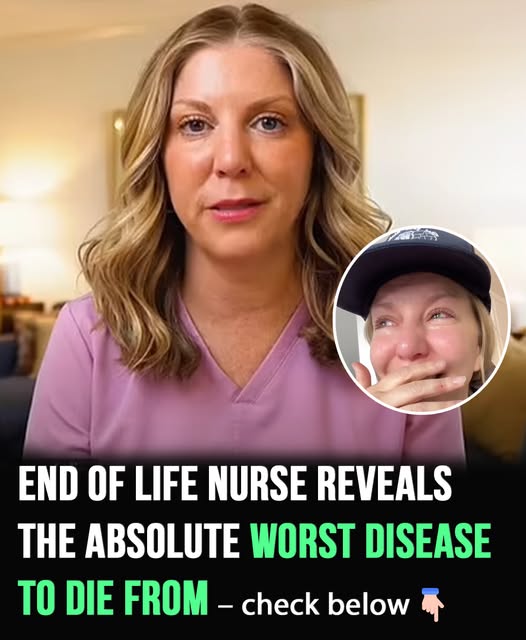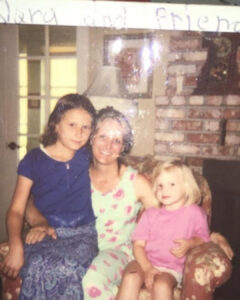Death is a subject most of us prefer to avoid, but for hospice nurse Julie McFadden, it’s a daily reality. Having guided over 100 patients through their final days, McFadden has gained a unique perspective on the suffering that certain diseases bring, as well as those that allow for a more peaceful departure. Now, she’s sharing her insights on the worst and best diseases to die from, shedding light on what patients and their families endure during the end-of-life journey.
The Worst Disease to Die From: ALS
Among all the diseases McFadden has encountered in her career, there’s one that stands out as the worst: ALS (Amyotrophic Lateral Sclerosis), also known as Lou Gehrig’s disease. McFadden describes it as “the cruelest death” she has ever witnessed. ALS is a progressive disease that slowly robs individuals of the ability to move, speak, swallow, and eventually, breathe. What makes it particularly devastating is that the mind remains sharp and fully aware throughout the progression of the disease.
“For the person with ALS, every part of their body shuts down while their mind remains alert. Watching someone you love fade away in this way is heartbreaking,” McFadden shared. Patients often endure a slow, agonizing decline, all the while trapped in their bodies. The condition is always fatal, with no current cure, and the progression varies from person to person. Some may live for only months, while others may survive for years.
In the U.S., an estimated 36,300 people will be diagnosed with ALS by 2030. The disease remains relatively rare, but it is incredibly quick to progress, with half of all diagnosed patients dying within 14 months of their diagnosis. Despite being a rare disease, ALS remains one of the most painful to witness, as many family members can attest.
Glioblastoma: A Brutal Battle
The second disease McFadden points to as one of the worst is glioblastoma, an aggressive form of brain cancer. Known for its rapid and severe impact, glioblastoma takes away a person’s memory, motor skills, and personality in a short time.
“This disease strikes hard and fast, stealing everything from memory to personality, leaving patients feeling like shadows of their former selves,” McFadden said. Most patients diagnosed with glioblastoma survive for only 12 to 18 months. With a survival rate that is shockingly low, only 1 in 4 patients live past the one-year mark, and fewer than 5 out of 100 survive longer than five years. The disease is as much a mental battle as it is a physical one, and family members often describe the painful experience of watching their loved ones “disappear” long before their actual death.
A Peaceful Passing: End-Stage Kidney Failure
On the other side of the spectrum, McFadden points to end-stage kidney failure as one of the most peaceful ways to pass. When dialysis is intentionally stopped in end-of-life care, patients often drift off to sleep peacefully without suffering.
“Stopping dialysis often leads to a peaceful death. Patients become drowsy and simply don’t wake up. It’s painless, and for families, it allows them time to say their goodbyes,” McFadden explained. This calm and dignified passing is something many families treasure. One person shared, “We played music, held his hand, and he just slipped away. It was beautiful, in a way.” Another shared their experience: “My dad passed from late-stage kidney disease. When he was ready to go, he stopped dialysis. We all had the chance to say goodbye on his terms. It was a relief for him and for us.”
Why This Matters: Dignity and Comfort in Dying
Julie McFadden’s reflections are not just about the medical aspects of death—they focus on dignity, comfort, and the human experience of dying. As conversations around terminal care and hospice continue to evolve, McFadden’s insights are becoming increasingly important. Many people are afraid to face the reality of death, but hospice workers like McFadden are often the only ones willing to speak openly about it. They provide essential perspectives on how we can improve the way we die, ensuring that the final moments are filled with love, comfort, and respect.
In the End: A Thoughtful Goodbye
While death is inevitable, not all deaths are the same. Some come with silent torment, as seen with ALS, while others come in a chaotic unraveling, like glioblastoma. Yet there are also those peaceful moments, like the one McFadden witnessed with end-stage kidney failure, where patients pass without suffering.
McFadden’s message is clear: how we die matters. With the right support and care, even the hardest goodbyes can be filled with love and compassion. Understanding the differences between these diseases and the type of care patients receive can help families navigate the painful final chapter with dignity and grace.
For more stories on navigating life’s toughest moments, check out these articles:
- Full Story: Man Loses 360 Pounds Naturally, Internet Rallies to Support His Next Step
- Full Story: Tammy Hembrow’s Bikini Photos Are Stirring Controversy—Here’s Why Everyone’s Talking
The lessons we learn from hospice nurses like Julie McFadden remind us that while death is inevitable, we can choose how we face it—with comfort, peace, and above all, love.




